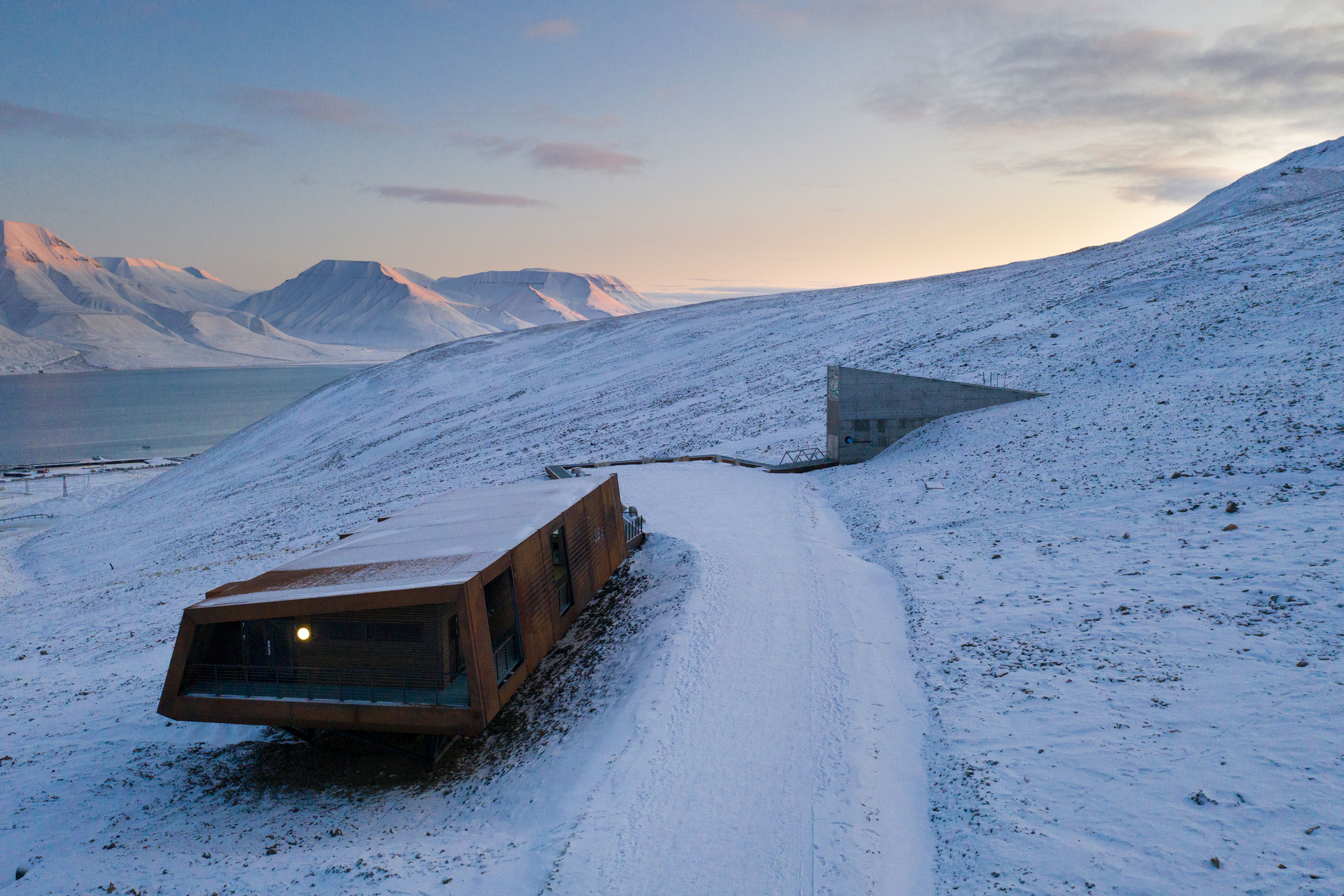Story at a glance:
- The Global Seed Vault on Svalbard holds the most diverse collection of food crop seeds in the world.
- Snøhetta designed the Seed Vault for the future, including renovations and an additional building meant to withstand climate change.
- Its location is the farthest north a person can fly on a scheduled flight—remote, but still accessible—and the permafrost offers extra security.
High in the Arctic and tucked more than 300 feet into the side of a mountain in Svalbard, the Global Seed Vault held more than 1.3 million seed varieties from almost every country in the world as of May 2024. Affectionately referred to by some as the “doomsday vault,” the Seed Vault is insurance against destruction—at least of crops.
“Conserving plant genetic resources and making them available for plant breeding and research has always been important. Climate change and a growing population have made the resources even more crucial,” says Åsmund Asdal, Global Seed Vault coordinator. “Troubled times and increasing levels of conflicts in the world have probably made more people, including politicians and gene banks, more aware of the need for extra security.”
From unique varieties of major African and Asian food staples like maize and sorghum to European and South American varieties of eggplant and potato, the Seed Vault holds the most diverse collection of food crop seeds in the world. Seeds are stored under “black-box conditions,” meaning the depositors are the only ones who can withdraw their own seeds.
Asdal travels to Svalbard from his office at a research station in southern Norway three to four times a year, when gene banks ship their seeds. He coordinates and handles the seed deposits and communicates with the banks.
What is the Global Seed Vault?
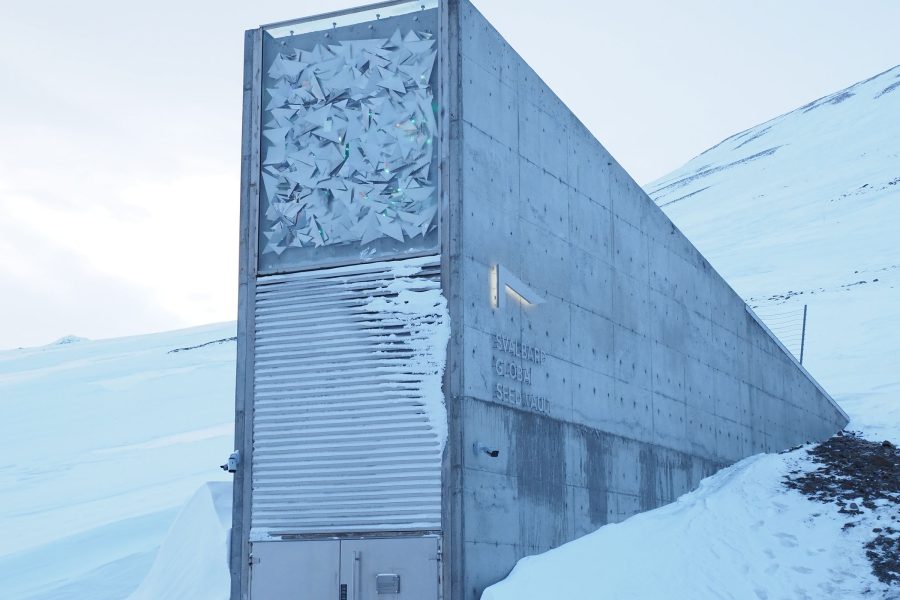
Photo by Haakon Daae Brensholm, Visit Svalbard
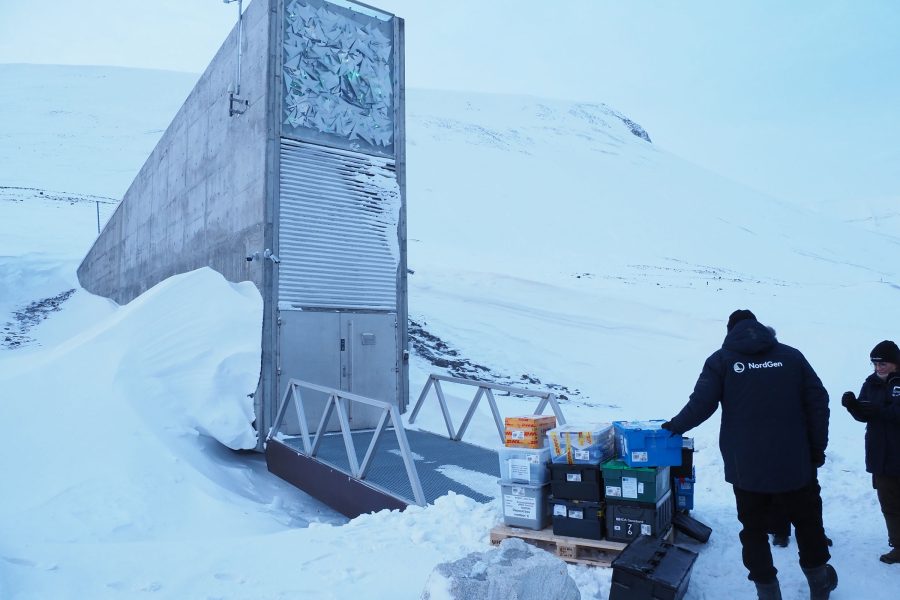
Photo by Haakon Daae Brensholm, Visit Svalbard
More than 1,700 gene banks hold food crops for safekeeping all over the world, but many are vulnerable to natural disasters and war, according to the Crop Trust, an international nonprofit dedicated to conserving and making crop diversity available globally. The Seed Vault is owned and administered by the Ministry of Agriculture and Food on behalf of the Kingdom of Norway and is established as a service to the world community.
The original Seed Vault building in Svalbard opened in 2008. Over the years, and with temperatures warming, water started to intrude in the entrance tunnel and had to be pumped out.
“The need for rehabilitation became clear as climate conditions shifted more rapidly than anticipated, leading to water infiltration challenges,” says Hans Martin Frostad Halleraker, a senior architect at Snøhetta’s Oslo studio. “Additionally, the original design did not fully account for the evolving environmental factors that arose in the years following the vault’s construction. In 2017 Snøhetta, together with engineers Dr. Techn. Olav Olsen, was brought in to address these issues and strengthen the facility’s resilience.”
Investigations with the engineers pointed to a need for a new tunnel to prevent future water infiltration and ensure the facility could cope with changing environmental conditions. The highly technical tunnel project required close collaboration between architects and engineers to address the water ingress and permafrost issues. By 2019 the new, watertight entrance tunnel was constructed.
Design for the Future
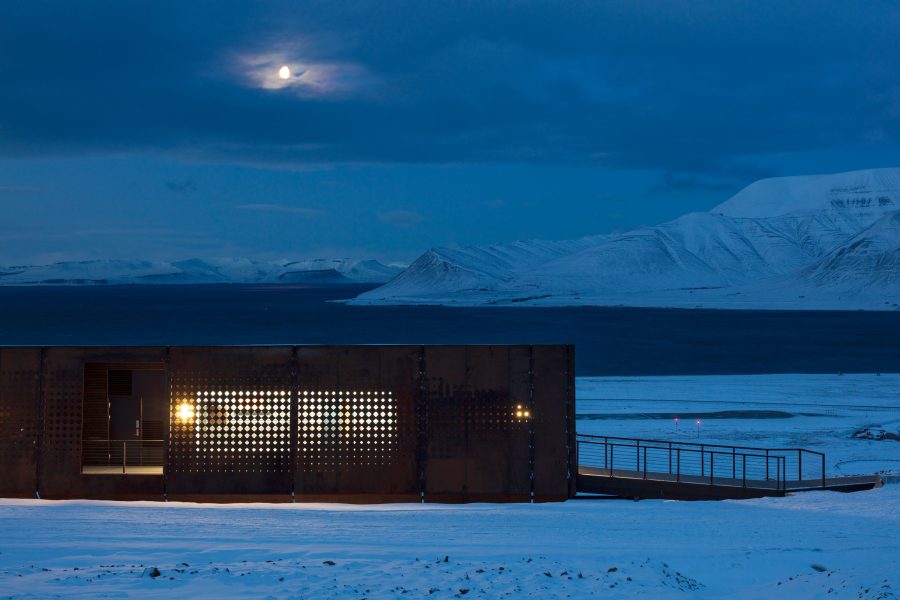
The facade of the Global Seed Vault’s service building plays an important role in its durability and adaptability. The design team at Snøhetta chose raw steel plates with a thickness of 8 millimeters, designed to rust naturally over time. The rusting process allows the steel to weather, creating a natural protective membrane that can withstand the rough environment. Photo courtesy of Snøhetta
A new service building was also added for more technical installations, as well as offices and facilities for seed-handling operations. This part of the project faced its own complex challenges. “The building had to withstand the movement of the permafrost, which behaves like a slow-moving glacier,” Halleraker says. “Since the service building is located on a slope, this continuous movement puts pressure on any structure in its path. To handle this we designed the building with a steel structure connected to solid ground, elevated on minimal touchpoints to adapt to the shifting permafrost while minimizing its impact on the surrounding landscape.”
Halleraker says the facade of the service building also played an important role in its durability and adaptability. “We chose raw steel plates with a thickness of 8 millimeters, designed to rust naturally over time. The rusting process allows the steel to weather, creating a natural protective membrane that can withstand the rough Arctic environment. The facade was designed to rust approximately 2 mm from each side, forming a barrier that protects the core of the structure while also blending with the stark, rugged landscape of Svalbard.”
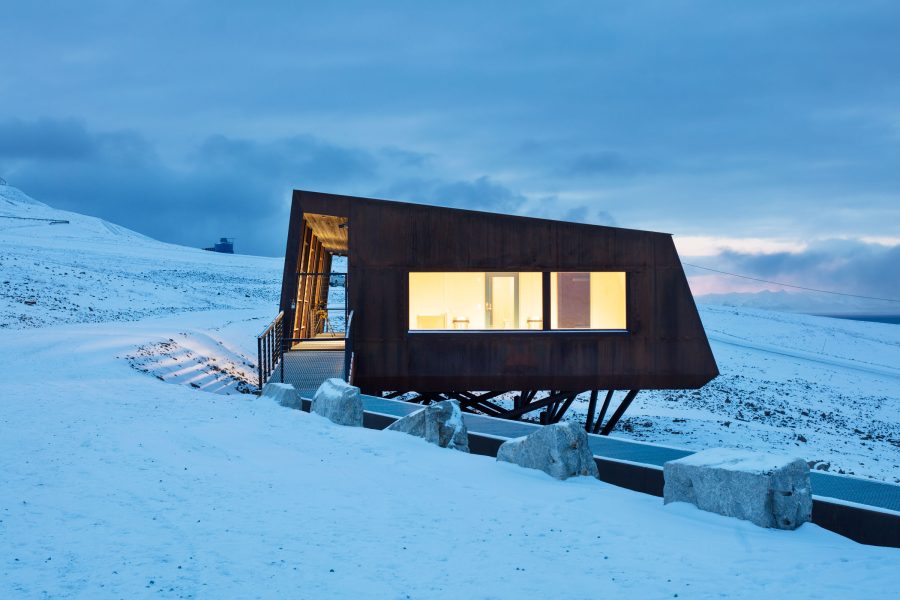
Using durable, low-maintenance materials was critical to ensure the Global Seed Vault’s service building would last for a long time—even in extreme conditions. Photo courtesy of Snøhetta
Using durable, low-maintenance materials was critical to ensure the building would last for a long time—even in extreme conditions. “The choice of materials and the building’s overall design reflect a careful balance between functionality, resilience, and environmental sensitivity. By minimizing the building’s footprint and using materials that age naturally in response to the environment, we ensured that the structure could withstand the unique challenges of its location while preserving the fragile landscape around it,” Halleraker says.
Potential reuse was another consideration. “The building materials were selected and components were designed in formats that can be easily disassembled and repurposed in other structures, making the project become part of a future regenerative ecosystem of buildings in Longyearbyen,” Halleraker says.
A temperature of −18°C is required for optimal storage of the seeds, and the permafrost and thick rock in this location ensure seed samples will remain frozen even without power. It’s part of why Svalbard was chosen for the Global Seed Vault in the first place, according to the Crop Trust. It’s also the farthest north a person can fly on a scheduled flight—so it’s remote but still accessible.
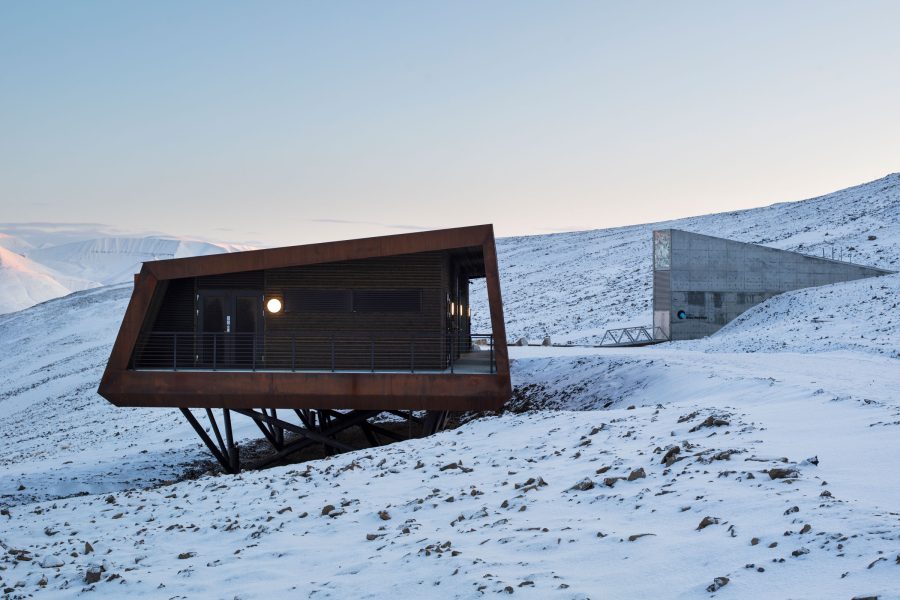
The Snøhetta team minimized the Global Seed Vault service building’s footprint and used materials that age naturally in response to the environment while further protecting the project. Photo courtesy of Snøhetta
Halleraker says the design principles used on the most recent project—like elevating the structure on steel poles and minimizing contact with the ground—could benefit designs in other vulnerable climates, including environments with unstable ground, flooding risks, or other climate-related challenges. “Anchoring buildings to solid ground while allowing flexibility for environmental shifts helps ensure long-term resilience without damaging the surrounding ecosystem.”
As climate change accelerates and disrupts ecosystems, the need to safeguard the world’s agricultural diversity becomes ever more urgent.
Using robust materials like raw steel, which he says naturally weathers into a protective layer, also offers a low-maintenance solution for extreme environments. “This approach, combined with resilient engineering, is ideal for remote areas where regular maintenance is difficult. The strategies developed for the Seed Vault demonstrate how thoughtful engineering and material selection can create buildings that are both resilient and environmentally adaptable.”
Beyond the ongoing permafrost challenges that were addressed during the rehabilitation project, Halleraker says no significant impacts on the structures have been seen since. “However, on a global scale, the existence of the Seed Vault is increasingly critical,” he says. “As climate change accelerates and disrupts ecosystems, the need to safeguard the world’s agricultural diversity becomes ever more urgent. The facility plays a vital role in protecting seeds in a secure environment, ensuring that future generations have access to the resources necessary to restore and sustain crops in the face of environmental challenges.”

